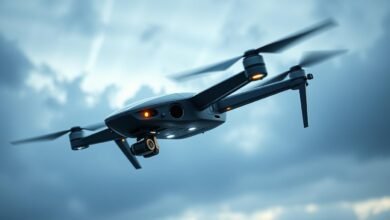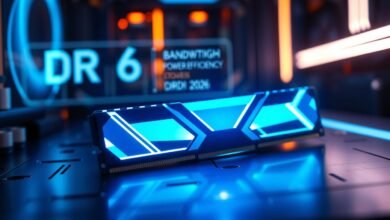Solid-State Battery 1.000 Wh/L: Drone Pengantar Medis 200 km, 15 Menit Charge Siap Terbang Lagi
A groundbreaking technology is transforming the capabilities of medical delivery drones, enabling them to travel farther and recharge faster than ever before. With the integration of advanced Solid-State Battery technology, these drones can now cover distances of up to 200 km on a single charge.
What’s more, they can recharge in just 15 minutes, making them ready to fly again in no time. This innovation is set to revolutionize the field of medical delivery, providing a faster and more reliable way to transport medical supplies.
Key Takeaways
- Advanced Solid-State Battery technology is being used in medical delivery drones.
- These drones can travel up to 200 km on a single charge.
- Recharging time is significantly reduced to just 15 minutes.
- The technology is poised to revolutionize medical delivery services.
- Faster and more reliable transportation of medical supplies is now possible.
The Breakthrough of Solid-State Battery Technology
Solid-state batteries represent a significant leap forward in battery technology, offering enhanced performance and safety. This advancement is particularly crucial for applications requiring high energy density and rapid charging, such as drones used in medical deliveries.
Understanding Energy Density: The Significance of 1,000 Wh/L
Energy density is a critical measure of a battery’s capability, defined as the amount of energy stored per unit of weight or volume. The achievement of 1,000 Wh/L in solid-state batteries marks a substantial improvement over traditional lithium-ion batteries. This enhanced energy density enables drones to fly longer distances without needing a recharge, making them more viable for long-range medical deliveries.
From Conventional to Solid-State: Evolution of Battery Technology
The transition from conventional lithium-ion batteries to solid-state batteries represents a significant evolution in battery technology. Solid-state batteries replace the liquid electrolyte in traditional batteries with a solid material, enhancing safety and performance. This shift not only improves energy density but also reduces the risk of battery fires and explosions, a common concern with lithium-ion batteries.
Key Advantages Over Lithium-Ion Batteries
Solid-state batteries offer several key advantages over their lithium-ion counterparts, including:
- Enhanced Safety: Reduced risk of thermal runaway and fires due to the solid electrolyte.
- Higher Energy Density: More energy stored per unit of weight or volume, enabling longer usage.
- Fast Charging: The ability to charge batteries quickly, reducing downtime for devices like drones.
As highlighted by industry experts, “The development of solid-state batteries is a critical step towards achieving more sustainable and efficient energy storage solutions.” This sentiment underscores the potential of solid-state battery technology to transform various industries.
Solid-State Battery 1.000 Wh/L: Drone Technical Specifications
The drone equipped with the advanced Solid-State Battery technology boasts impressive technical specifications. With an energy density of 1,000 Wh/L, this drone can achieve a range of 200 km on a single charge, making it ideal for medical delivery and other long-range applications.
The Fast Charging capability of the Advanced Drone Battery allows the drone to recharge in just 15 minutes, minimizing downtime and enabling rapid deployment. This feature is particularly valuable in time-sensitive medical deliveries where every minute counts.
The integration of Drone Technology with Solid-State Batteries represents a significant leap forward in unmanned aerial vehicle (UAV) design. The drone’s technical specifications, including its range and charging time, demonstrate its potential for a wide range of applications beyond medical delivery, such as surveillance and environmental monitoring.




